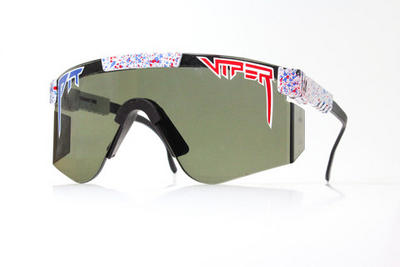weird, apparently all sunglasses arent equal and arent designed to the same UV standard, would you like to make another bargain on the fact that say oakley, who provides a uv transmission index for all their lenses, are better than those piece of shit lenses in those $5 gas station glasses?
8. Current sunglass standards
In the USA, the American National Standards Institute (a non-governmental, consensus standard body) issued a consensus standard for specifying sunglasses and ‘fashion eyewear’, but this standard is voluntary and is not followed by all manufacturers [1] and [50]. This standard (ANSI Z80.3) requires less than 1% transmission at wavelengths below 310 nm. Different shades are recommended for beach and boating, etc. The dominant philosophy in this group has been that sunglasses are for fashion and not really needed for eye protection, except in a ‘special purpose’ category [1]. This viewpoint differs from that encountered in Europe and Australia, where eye safety has been taken as critical factor. In all of the standards, strong hues are not permitted for general-purpose sunglasses because of concern that strong hues could interfere with the recognition of traffic signals and warning lights [1], [50], [54] and [55].
The question of what transmittance characteristics are optima remains open to discussion. It would be simple to recommend maximal transmittance values for lenses based upon present occupational exposure limits for acute exposure. In such a case, approximately 5% transmittance in the UV-B would be sufficient to limit exposure in most outdoor situations to current limits [1] and [9]. Other requirements are needed to specify a lens for an aphakic person, and a 1% transmittance in the UV-A should be recommended.
This approach would suggest that visual comfort should be the guide for selecting sunglass filters. However, the occupational limits were based upon acute exposure studies for relatively small light sources and were not really intended to apply to chronic, daily exposure where eye and head movements would not reduce the average retinal exposure. The other evidence just reviewed would suggest that if dark lenses were placed over our eyes, our natural aversion to bright light — which leads to the squint that normally greatly lowers the UVR and blue-light exposure to the eye — would be ‘disabled’. This may appear to be a funny way to consider the comfort that shaded lenses bring about. But, just consider that some of our ‘discomfort’ derived from not wearing sunglasses or a brimmed hat stems from muscle fatigue associated with squinting. We must therefore ask whether sunglasses may not actually lead to a more harmful exposure condition rather than provide protection. Certainly, any ideal sunglass lenses should provide equal or better protection against UVR and blue light than the squint, which it disables!
The problem then remains to quantify the protective value of the upper and lower lids when they close down to provide a squint. In terms of UVR exposure, a 10-fold reduction is likely. In terms of shielding the retina from the direct image of the sun, the upper lid probably provides a protection factor exceeding a thousand — a factor nearly impossible to equal in a sunglass lens without using a goggle with side-shields and employing a deep orange color which would be cosmetically unacceptable for most of us. There have been suggestions that a sunglass protective index be employed to inform the consumer of the protective value of lenses in much the same way that sun protective factor (SPF) is used for sunscreens of the skin. The problem has been in deciding on a spectral weighting factor. Although discussed in many sunglass standards committees around the world, only Australia has actually adopted such a measure [55].
If we wear a brimmed hat, then the direct image of the sun on the retina is rare. Before we conclude that only orange sunglasses are acceptable, we should fairly point out that even sunglasses do not preclude squinting if the sun is stared at — a dangerous practice, of course.
by the way, oakely for example does meet ANSI Z80.3 on most if not all of their sunglasses....
im sorry, what was that? oh yes, thats right, sit the fuck down dickcheese





